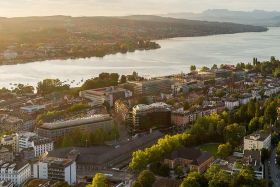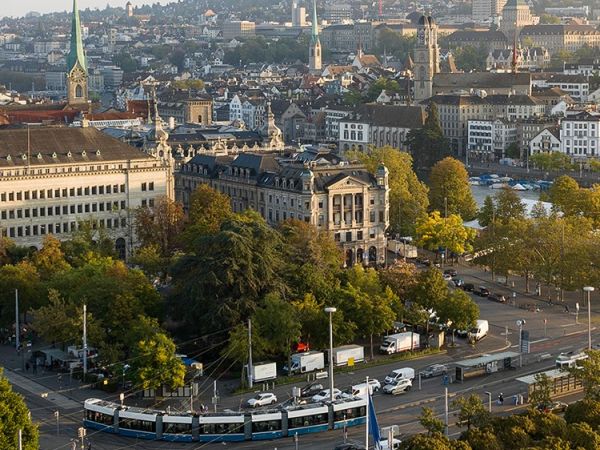
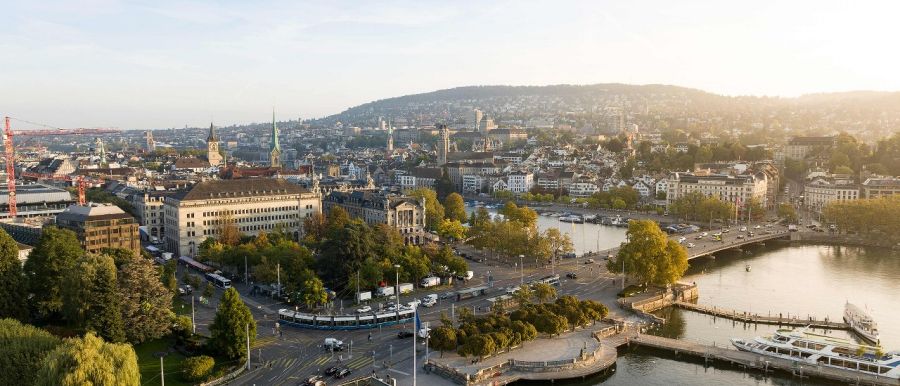
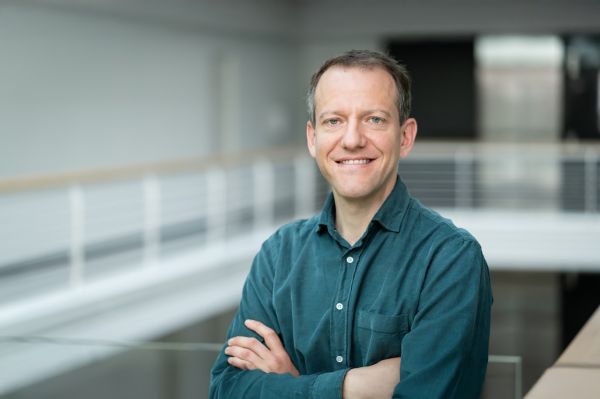
1. What is the latest status of the project and why is Basteiplatz square central to this?
A first step in the preparation of the CoolCity lake heat network took place in October 2023: construction of the 20 m deep access point began at Basteiplatz square in Zurich’s city centre.
Starting in spring 2024, a tunnel boring machine will dig a small microtunnel from Basteiplatz square under Talstrasse towards the lake at a depth of about 10 m. The 300 m long tunnel will end at the Bahnhofstrasse/Börsenstrasse access point. If everything goes according to plan, the small microtunnel should be built and the pipelines laid in it by the end of 2024.
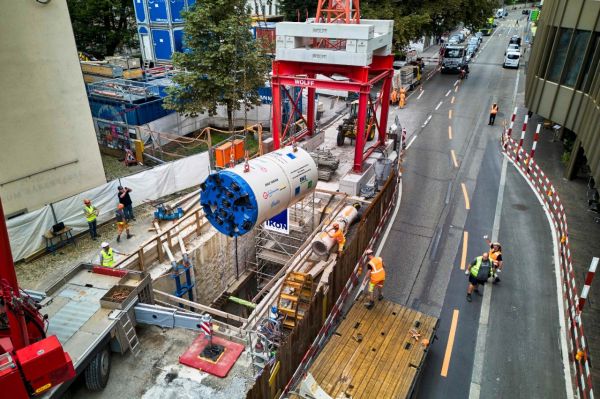
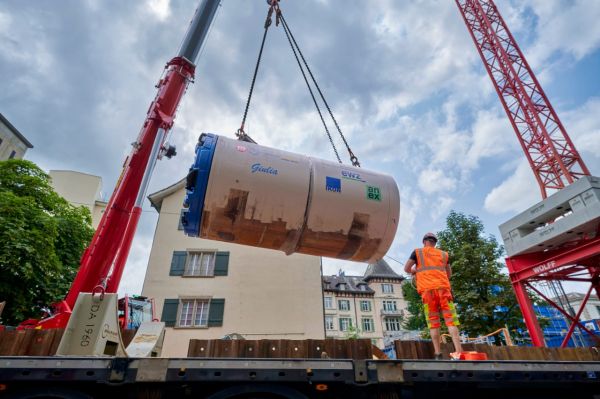
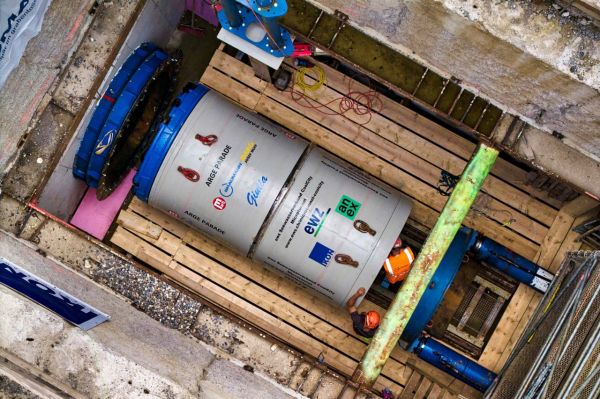
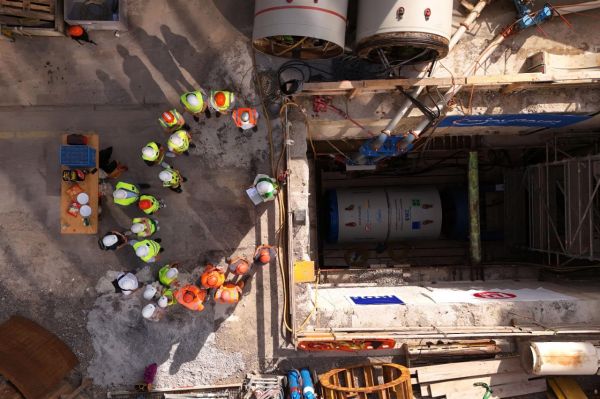
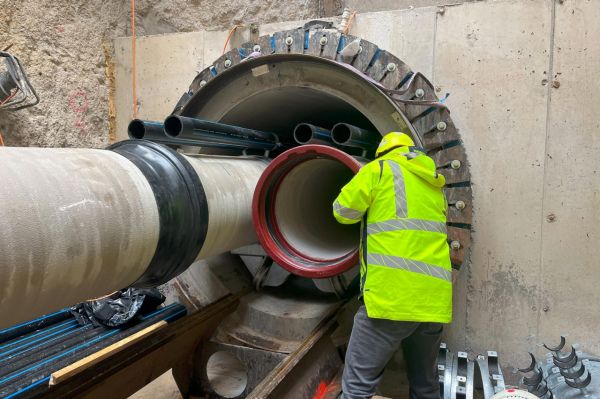

In an initial phase, the small microtunnel will serve as an extension of the Fraumünster lake heat network, which will also include the buildings at Paradeplatz square from 2025. In a second phase, the small microtunnel and the Basteiplatz access point will be the link between the Fraumünster and CoolCity lake heat networks.
The access point at Basteiplatz square will play a key role, because it will eventually connect the small microtunnel with the large microtunnel. Construction of the large microtunnel with a diameter of 3 m, which will lead from the central lake water system near Bürkliplatz square to the Selnau energy centre, is expected to start in 2027.
2. What is microtunneling and what are the benefits?
Once the starting and target excavation pits have been constructed, most of the construction work takes place in the depths and largely goes unnoticed by passers-by. There is also much more space for new infrastructure at a depth of 10 to 20 m where the microtunnels will be located, so conflicts with other lines, such as telecommunications, sewage and electricity, can be largely avoided.
Particularly in inner city areas with densely built-up zones and roads with heavy traffic, microtunneling results in far lower building emissions than conventional surface trench construction.
3. What does CoolCity mean and what are the long-term goals?
As the CoolCity name implies, the numerous office and commercial buildings within the perimeter have a high cooling requirement, which is likely to further increase in the future in view of climate change. Using water from Lake Zurich will enable the connected buildings to be cooled and heated efficiently without fossil fuels.
CoolCity is due to be commissioned in phases between 2031 and the end of 2039. ewz plans to complete the main area by 2035, while the district heating supply to the old town is to be completely developed by 2039.
At the same time as the CoolCity preparations, planning for the Enge lake heat network on the western shore of the lake is taking place. This will be implemented gradually between 2026 and 2033 and, once completed, is expected to join CoolCity as one of the largest networks on the shores of Lake Zurich.
Before the thermal energy reaches the buildings in the form of heating or cooling, it will pass through various stations. The first will be the lake water collection station near Zürihorn, where the water will be collected at a depth of about 25 metres and transported via a pipe to the central lake water system near Bürkliplatz square. There, a heat exchanger will transfer the thermal energy to an anergy grid, which will form a closed circuit. This will prevent contamination, for example from shellfish, entering the system and make maintenance easier. The chemically unchanged and ecologically safe lake water will be returned to the Limmat river.
The anergy grid, in turn, will serve as an energy source for the Selnau energy centre. In the future, heat pumps and cooling machines there will generate the required temperature level for the district heating network (67 °C) and district cooling network (12 °C) and supply the majority of the CoolCity perimeter. The process is somewhat different in the City Anergy supply area around Paradeplatz square and up to the lake: in this section, ewz supplies the properties with energy directly from the anergy grid (operating temperatures –1 °C to 17 °C). The heat pumps and cooling machines are installed in the individual buildings.
